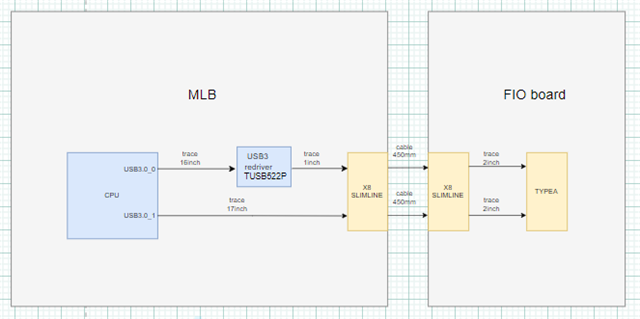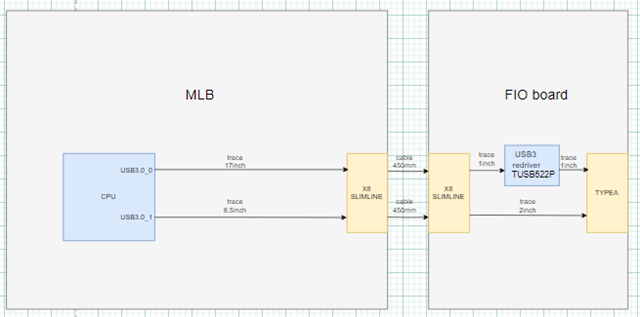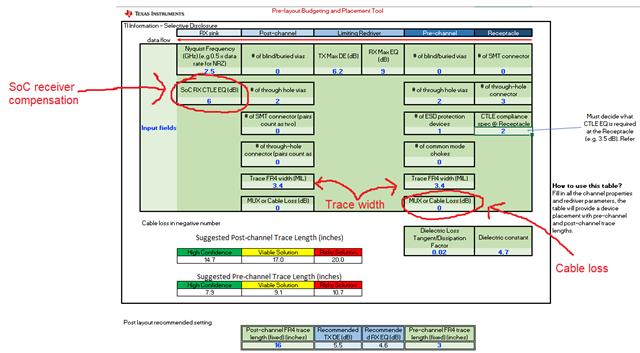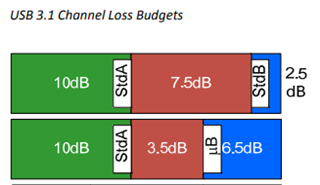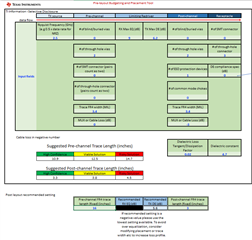Other Parts Discussed in Thread: TUSB1002A
Tool/software:
Hi Expert,
Do the following design parameters mean that the trace length range from HOST to REDRIVER supported by TUSB522P on FR4 PCB board is 1-20 inches, and does the trace length from REDRIVER to terminal connector be less than 6 inches? If the above understanding is not correct, is the trace length spec Can it be used as a reference for customers?
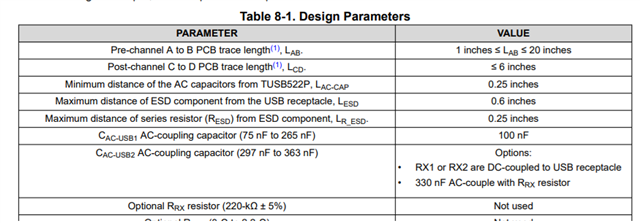
Regards,
Hailiang


